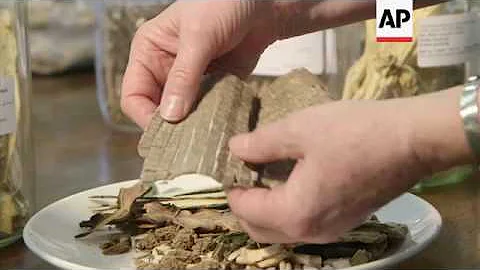
Cadmium (Cd) pollution poses a serious threat to crop growth and development, food safety and human health, and has become a potential agricultural and global environmental problem. Zinc (Zn) is used to reduce the accumulation of Cd in soil and plants. The protein located on the plasma membrane (PM) plays an important role in plant stress signaling. With the deepening of research on the absorption, transport and tolerance mechanisms of heavy metals in plants, the significance of research on stress-related PM proteins has become increasingly prominent.
In May 2022, Lin Xiaoyan's team from China Rice Research Institute published a paper titled "The potential role of plasma membrane proteins in response to Zn stress in rice roots based on iTRAQ" in the Journal of Hazardous Materials (IF=14.224). and PRM under low Cd condition” research article. This study used proteomics and PRM targeted omics technologies to analyze the differential changes in rice root plasma membrane proteins in response to zinc stress under low cadmium conditions, as well as the response mechanism of differentially expressed proteins involved in zinc-cadmium transport. It provides basic data reference for further research on the molecular mechanisms of heavy metal stress tolerance, growth and development, and metabolic regulation of rice. Zhongke New Life provided iTRAQ proteomics and PRM targeted quantitative proteomics technical services.

Research materials:
PM protein in rice roots after treatment for 7 days in the experimental group (T) and control group (CK), with three biological replicates in each group.
technical route:
step 1: zinc on zinc and cadmium accumulation in low-cadmium treated rice seedlings;
step 2: quantitative proteomics detection under zinc stress;
step 3: differentially expressed proteins Bioinformatics analysis;
step 4: Research on zinc-cadmium transport-related proteins;
step 5: PRM verification of candidate proteins.
Research results:
1. Effect of zinc on zinc and cadmium accumulation in rice seedlings treated with low cadmium
Low concentration Zn promoted the absorption and accumulation of Cd in rice seedlings, resulting in an increase in Cd content and inhibiting the growth of rice seedlings (synergistic effect) ; Moderate concentration of Zn inhibits the absorption and accumulation of Cd and promotes the growth of seedlings ( antagonizes the effect of ). However, if the Zn concentration is too high, although Zn can inhibit the absorption and accumulation of Cd in rice, it is not conducive to the growth of rice seedlings and may even cause high Zn toxicity (antagonism) to rice seedlings.
2. Quantitative proteomic detection under zinc stress
quantitatively detected PM proteins through iTRAQ proteomics technology, and analyzed rice roots after 7 days of CK and T4 treatment through bioinformatics . A total of 14,326 peptides and 4,008 proteins were identified in PM protein samples extracted from CK rice roots, of which 192 were up-regulated and 140 were down-regulated.


Figure 1 Number of proteomic identifications and volcano plot
3. Bioinformatics analysis of differentially expressed proteins
Through hierarchical clustering analysis, it can be seen that every three replicates of the control group and the treatment group are clustered together, with high reproducibility. . At the same time, there were significant differences in protein expression abundance and expression levels in the two groups of rice roots.

Figure 2 Hierarchical clustering analysis of differentially expressed proteins
performed GO annotation and functional enrichment analysis on the biological processes (BP), molecular functions (MF) and cellular components (CC) of differentially expressed proteins (DEPs), and found that PM Proteins are very sensitive to heavy metal stress and play an important role in responding to heavy metal stress and mitigating the toxic effects of heavy metals.

Figure 3 GO annotation and enrichment analysis of differentially expressed proteins
KEGG pathway analysis found that DEPs related to plant metabolism are mainly involved in glutathione metabolism, phenylpropionic acid biosynthesis, photosynthetic biological carbon fixation, etc. Glutathione is often used as a redox active agent and detoxifying compound in various metabolic processes in plants and as an intermediate in transport and biosynthesis.In this study, high concentrations of zinc had a strong stimulating effect on rice, leading to an increase in glutathione activity and content to resist the toxic effects of zinc treatment. Enrichment analysis found platinum resistance, alpha-linolenic acid metabolism, regulation of calcium reabsorption by endocrine and other factors, SNARE interactions in vesicular transport, flavonoid biosynthesis, ABC transport under heavy metal treatment Both protein and lysine degradation were significantly affected.

Figure 4 KEGG pathway annotation and enrichment analysis of differentially expressed proteins
4, study of zinc-cadmium transport-related proteins
recorded 7 DEPs involved in Zn2+ and Cd2+ transport in GO analysis and KEGG pathway analysis. Among them, 3 DEPs were up-regulated (A2XQ09, B8B248 and B8AAT90); 4 DEPs were down-regulated (B8AB68, A0A1B1ELU7, A2XPS1 and B8BN76). PPI interaction analysis shows that 5 of these 7 DEPs interact with each other.

Figure 5 PPI interaction network of differentially expressed proteins
5, PRM verification of candidate proteins
Establish PRM detection methods for four candidate proteins (B8AB68, B8AAT9, A0A1B1ELU7 and B8BN76) for targeted verification. The results showed that protein A0A1B1ELU7 had the same expression changes in different treatments.

Figure 6 PRM quantitative results of candidate proteins
Summary
In summary, this article used relative quantitative proteomics and PRM target verification to reveal the Zn/Cd interaction and transmembrane transport mechanism in stress response at the protein level, and found Potential target proteins related to heavy metal uptake and transport in rice roots were identified. This study provides basic data reference for the screening of heavy metal stress response protein biomarkers in rice roots and the detoxification mechanism of resistance to heavy metal stress.





















